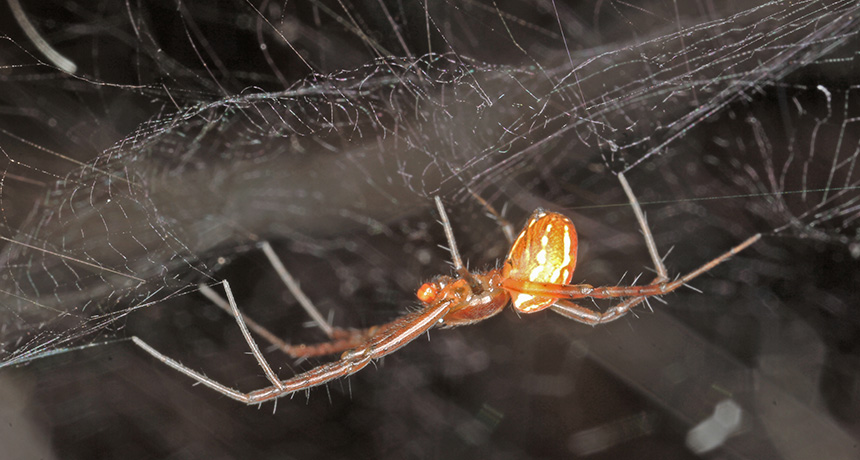
SPIDER DAD OF THE YEAR The small Manogea males buck the trend among spiderkind, giving up their solitary ways to stay near their offspring and fight off attackers.
Marcelo O. Gonzaga
The first normally solitary spider to win Dad of the Year sets up housekeeping in a web above his offspring and often ends up as their sole defender and single parent.